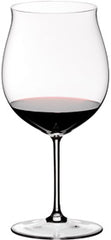Awards
Details

Perfume

Color

Taste
Serve at:
16 - 18 °C.
Longevity:
10 - 15 years
Decanting time:
1 hour

Pairings
- Start up year: 1993
- Oenologist: Melissa Apter, Renzo Cotarella
The estate is located in the eastern part of the Napa Valley, on a high plateau (500-600 meters, or 1650-200 feet above sea level) in the Vaca Mountains. The landscape, with its hills, greatly recalls Tuscany, but above all represents an ideal area for viticulture. Time, in nature, runs slowly: this adventure, begun in 1993, led to a first production of wine from the zone only in the year 2001.
This limited-production Cabernet Sauvignon represents a first important step for the estate, defining its great potential. With the 2006 vintage, “Antica” Napa Valley Cabernet Sauvignon and, now to accompany it, “Antica” Napa Valley Chardonnay, were produced, wines in whose DNA, perfectly and harmoniously entwined, the styles both of Tuscany and of California can be found. Antica is the realization of a dream and, at the same time, a milestone in the production of great wine with the Antinori name in California. Read more


| Name | Antica Napa Valley Cabernet Sauvignon 2019 |
|---|---|
| Type | Red still |
| Denomination | Napa Valley AVA |
| Vintage | 2019 |
| Size | 0,75 l |
| Alcohol content | 14.7% by volume |
| Grape varieties | 100% Cabernet Sauvignon |
| Country | United States of America |
| Region | California |
| Vendor | Antica Napa Valley (Antinori) |
| Origin | Atlas Peak District - Napa Valley |
| Soil composition | The vineyards are planted up to 1,800 feet above the Napa Valley floor, in the volcanic soil series Boomer Gravelly Loam, Perkins Gravelly Loam and Aiken Loam, all soils formed in material weathered from basalt and andesite. |
| Harvest | The Cabernet Sauvignon grape harvest end of September. |
| Wine making | Each vineyard block was fermented individually to maintain the distinctive characteristics of its grapes. Fermentation took place 10 4 days in temperature-controlled tanks. After the new wine was removed from the skins, it was racked into primarily French oak barrels where it went through complete malolactic fermentation. |
| Aging | When the barrel ageing period was completed after 16 months, the wine in each barrel was tasted and the final selections made. Individual barrels were racked resulting in the final blend. |
| Allergens | Contains sulphites |








